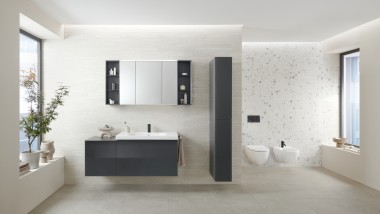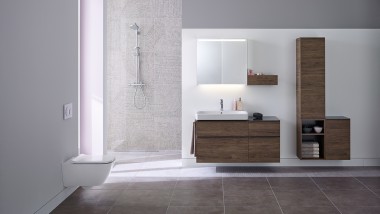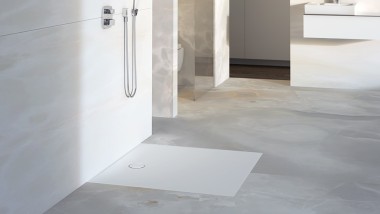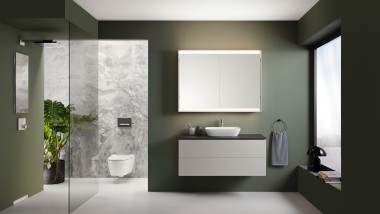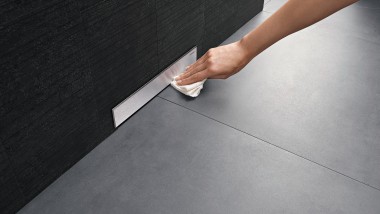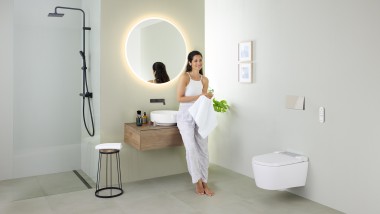How to prevent legionella in drinking water
What are legionella?
Legionella are bacteria that we really don’t want to have in our bodies. They are pathogens and can lead to infections, particularly in people with weakened immune systems.
Because they spread in pipes with drinking water, it is important to keep an eye on their habitat and the quality of our drinking water.
How do legionella end up in water?
Legionella get into the drinking water via the domestic water supply. They only become dangerous to humans when the small quantities of legionella found in the pipes multiply significantly. Water temperature and stagnation as well as the nutrient supply in drinking water are the decisive factors in the spread of legionella. Temperatures of between 25 and 50 degrees Celsius are the perfect conditions for such bacteria to multiply – but this is only an issue if the water is not replaced regularly.
Commissioning a company specialising in water analysis is a good idea for testing legionella in your property.
Legionella should not be feared – or underestimated
Legionella are bacteria that can cause disease. When you shower, they are rinsed out of the shower head in tiny water droplets. The pathogens enter the lungs in water via the respiratory passages. In healthy people, they are unlikely to cause illness. However, people with a weakened immune system can be at risk.
What illnesses do legionella in water cause?
Legionella can cause legionnaires’ disease. This is a serious lung infection, with symptoms including the rapid onset of headaches and chest pain, coughs, chills and fever. The lung infection is often severe and can last around four weeks. The long-term effects are unknown.
Are infections caused by legionella common?
In most countries, reported cases of legionnaires’ disease caused by legionella are below two instances per 100,000 people according to the European Centre for Disease Prevention and Control. The European average is 1.8 instances. In Germany, the rate is as low as 1.7 instances per 100,000 people.
Tips on low-legionella drinking water
The following measures are used to fight the pathogens:
- Ensure that the toilet is flushed about once every 24 hours. This can prevent the spread of pathogens even when the temperatures are favourable.
- Set your boiler to at least 55 °C. This means bacteria cannot multiply in the boiler.
- The installation of a hygiene flush unit is a good idea in properties that are not used regularly. These units can be programmed so that the pipes are flushed regularly and the water is replaced.
- Clean the aerators on your taps and the shower head regularly.
Ensure drinking water hygiene with the correct planning
If there is a legionella problem, it could well be worth your while to use a temporary hygiene flush unit – such as the Geberit HS10 model. Without any major conversion work and without great expense, it can be fitted at the relevant pipe section to re-establish the quality of your drinking water.
A fixed hygiene flush unit is recommended when the property is not used regularly. This prevents excessive stagnation times in the drinking water pipes. Hygiene flush units can be installed either in the toilet cistern or externally at a suitable point in the water supply system. Hygiene flush units can be programmed directly on the product or, depending on the model, set and controlled using the Geberit Control app.
Prevent legionella by regularly inspecting the domestic water filter
Home owners should have their domestic water filter regularly checked by a plumber. They can then recommend a replacement, when necessary.
Tenants usually do not have to take care of this, as the inspection and replacement is normally the responsibility of the caretaker.
Pay attention to the water temperature
Water temperatures of between 25 and 50 degrees Celsius are the perfect conditions for legionella to multiply. The bacteria stop multiplying abruptly at 50 degrees, while the time needed for them to double decreases at below 25 degrees. In summer in particular, there is a significant risk of the cold water pipes in the danger area heating up.
Steps can be taken primarily at the boiler. Setting the hot water temperature to at least 55 °C at all times ensures that the bacteria cannot multiply.
Newsletter Register now
Stay up to date
Our newsletter provides fascinating insights and handy tips on how your bathroom can make your life easier.
